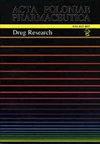fda批准的治疗衰老相关疾病的药物:一项计算机研究
IF 0.4
4区 医学
Q4 PHARMACOLOGY & PHARMACY
引用次数: 0
摘要
骨骼肌是人体最复杂、可塑性最强的组织。运动、姿势支持、呼吸和产热是SM的重要功能。肌肉质量减少是人类衰老的常见副作用。生长因子肌肉生长抑制素(MSTN)似乎在衰老相关的肌肉功能下降中起着关键作用。靶向MSTN可能通过防止与衰老相关的SM改变来帮助人们长寿。因此,在本研究中,美国食品药品监督管理局批准的药物(从2015年到2020年,共273种药物)针对MSTN进行了筛选,以寻找治疗衰老疾病的最佳药物。在这方面,使用了筛选、对接和分子动力学模拟。基于基于结构的虚拟筛选和结合的自由能,我们选择了本文中提到的前五种药物。深入分析了两种药物,即Sonidegib和Revefenacin与MSTN的结合自由能分别为-10.95和-12.03kcal/mol。此外,将这些复合物用于分子动力学模拟,以检查100ns期间的结构稳定性,发现其更稳定。最后,Sonidegib和Revefenacin可以考虑进一步设计抗MSTN的新药,用于治疗衰老相关疾病。本文章由计算机程序翻译,如有差异,请以英文原文为准。
An insight of FDA-approved drugs for the management of aging related disorder a in silico study
Skeletal muscle (SM) is a most complex and plastic tissues of the human body. Movement, postural support, breathing, and thermogenesis are important functions of SM. Muscle mass reduction is a common side effect of human aging. The growth factor myostatin (MSTN) appears to play a key role in aging-related muscle function decreases. Targeting MSTN might help people live longer by preventing SM alterations associated with aging. Therefore, in the present study, FDA-approved drugs (from 2015 to 2020, total 273 drugs) were screened against MSTN to find the best drugs against MSTN for the management of aging disease. In this regards, Screening, docking, and molecular dynamics simulation was used. Based on structure-based virtual screening and free energy of bind, we select the top five drugs as mentioned in this article. Two drugs were analyzed in-depth namely, Sonidegib and Revefenacin showing free energy of binding -10.95 and -12.03 kcal/mol respectively with MSTN. Further, these complex was forwarded for molecular dynamics simulation to check the structural stability during 100ns, which was found to be more stable. As a concluding remark, Sonidegib and Revefenacin can be considered for further designing of new drugs against MSTN for the treatment aging related disorders.
求助全文
通过发布文献求助,成功后即可免费获取论文全文。
去求助
来源期刊
CiteScore
0.80
自引率
0.00%
发文量
74
审稿时长
6-12 weeks
期刊介绍:
The international journal of the Polish Pharmaceutical Society is published in 6 issues a year. The journal offers Open Access publication of original research papers, short communications and reviews written in English, in all areas of pharmaceutical sciences. The following areas of pharmaceutical sciences are covered: Analysis, Biopharmacy, Drug Biochemistry, Drug Synthesis, Natural Drugs, Pharmaceutical Technology, Pharmacology and General.
A bimonthly appearing in English since 1994, which continues “Acta Poloniae Pharmaceutica”, whose first issue appeared in December 1937. The war halted the activity of the journal’s creators. Issuance of “Acta Poloniae Pharmaceutica” was resumed in 1947. From 1947 the journal appeared irregularly, initially as a quarterly, then a bimonthly. In the years 1963 – 1973 alongside the Polish version appeared the English edition of the journal. Starting from 1974 only works in English are published in the journal. Since 1995 the journal has been appearing very regularly in two-month intervals (six books a year). The journal publishes original works from all fields of pharmacy, summaries of postdoctoral dissertations and laboratory notes.

 求助内容:
求助内容: 应助结果提醒方式:
应助结果提醒方式:


